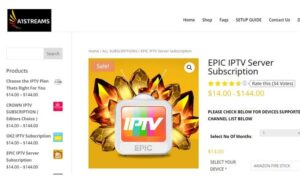Most information technology resumes aren’t vetted by IT professionals. As an IT pro, your career accomplishments will probably be evaluated by other “gatekeepers” before your resume reaches IT. HR managers are the traditional guardians of payroll, and they will be some of the first to step in. Even before that, your resume will be looked at by junior HR employees or administrative assistants entrusted with figuring out which candidates are worth a closer look. You could pass four or five rounds before you get an interview!
The challenge? Many of these people will have limited knowledge about what an IT pro does.
In a large company, you only get an opportunity to meet the IT team during or after the interview, after you pass muster with just about everyone else in the building. That means an effective IT resume goes beyond your hardware and software skills and includes signals less technical gatekeepers will respond to. By packaging your knowledge to speak their language while demonstrating your technical skills, you can make sure your resume gets passed forward to the decision-makers who know IT best.
1) Talk Results, Not Hardware
HR personnel are trained to look for “bottom line” value from every move employees make. On the flip side, they don’t respond to technical details like the make and model of the hardware you used, upgraded, configured, or migrated. Focus on other quantifiable details like improvement in uptime, speed, troubleshooting time, support calls, and most importantly, the business problems your changes resolved. For every position on your resume, consider a “lasting impact” section that summarizes, quickly and cleanly, how much better things ran once you were done.
2) Spell Out Software Results
In most large enterprises, everyone will be more familiar with software than with hardware. They may use sophisticated, company-wide software suites like Customer Relationship Management or Enterprise Resource Planning. That means they understand what happens when those tools stop working! Spell out acronyms on first use, and introduce each suite you worked with in a sentence that summarizes its importance, such as “Implemented Customer Relationship Management system that helped expand contract value among 250 clients.” Then, look for juicy business results from other departments whose jobs were made easier, faster, or less expensive thanks to your implementation.
3) Use Visuals Effectively
A good information technology resume is a lot more interesting than technical documentation, but there is one aspect where the two can be similar: visuals. Since IT pros create a lot of measureable results, it’s especially easy to pop a line or bar graph into your resume for greater impact. For added emphasis, try a double line graph where the “good” result is the inverse of the “bad” issue: for example, uptime goes up in a green line, and downtime goes down in a red one; or uptime goes up and tech calls go down; the combinations are endless, but don’t overdo it. The taller the bar or sharper the line, the better the graph … but be sure it’s legible and understandable to a novice.
4) Focus on Team Contributions
IT pros have an undeserved reputation for being poor communicators, and “communication skills” is a phrase found in virtually every position description. To bolster your leadership credentials, talk about ways you contributed to project teams, connected cross-functionally to work on IT solutions that helped the rest of the business, or provided ideas that became part of a major project. Another aspect is disaster management. Are you the one who tested software for 23 hours to make the deadline? Migrated to the new data center SWAT team style for four weekends straight so no one would hit a glitch? Take credit where credit is due!
5) Spell it All Out in an Addendum
Most resumes for mid-career professionals are two pages long; no more, no less. IT pros have an advantage: they can use a third page to list all their credentials and every piece of software, hardware, model, vendor, and version they’ve mastered. This is a great place to emphasize your continuing education and recent certifications. You can even use the space to toss in some more visuals, making sure the reader’s “takeaway” is your top achievements. Just be careful not to date yourself! You may still know your way around the DOS command line, but what are the odds you’ll see it again?



